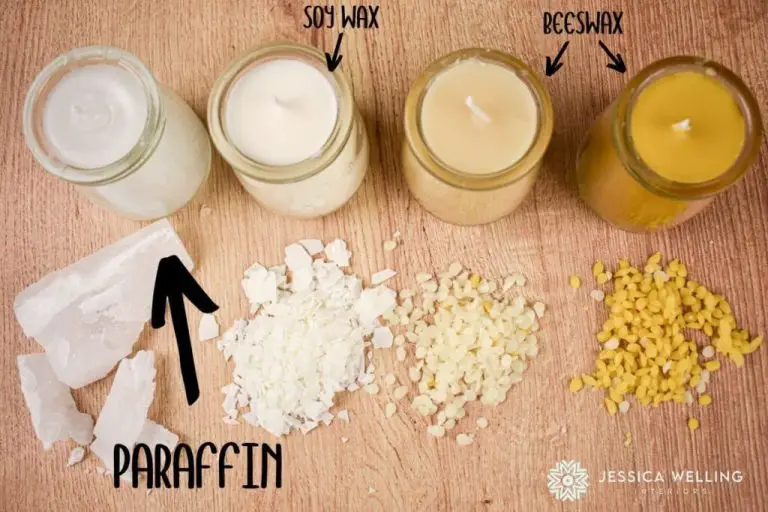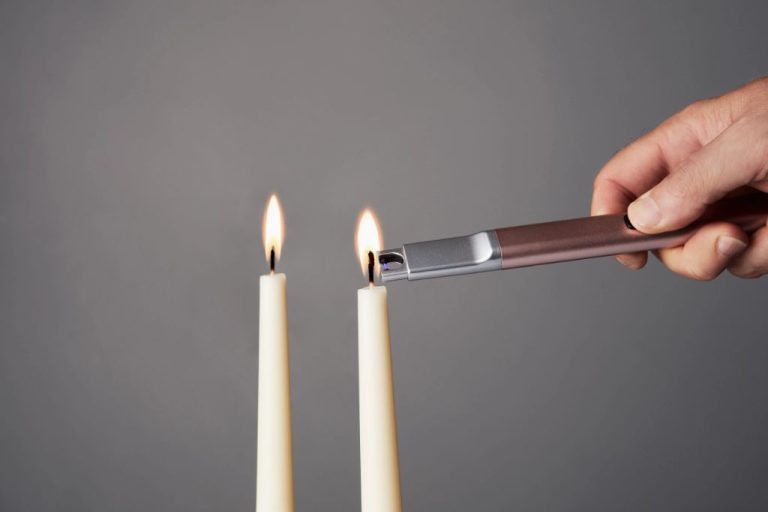Are The Candles From Bath And Body Works Safe?
Bath & Body Works candles have become incredibly popular home fragrance products over the last few decades. Known for their indulgent scents and stylish packaging, these candles are staples in many households. However, some concerns have been raised recently regarding the safety of Bath & Body Works candles. There are questions around whether the ingredients and manufacturing processes used make these products potentially hazardous.
In light of these concerns, this article will analyze the potential risks of using Bath & Body Works candles. We’ll look at the ingredients, manufacturing standards, proper usage guidelines, scientific studies, and expert opinions. The goal is to provide a comprehensive view on the safety issues so consumers can make informed decisions about whether to light Bath & Body Works candles in their homes.
Ingredients
Bath & Body Works candles are primarily made from paraffin wax, a byproduct of petroleum refining. Paraffin wax is odorless and colorless, providing a clean burning base for candles. The candles also contain fragrance oils and dyes to provide appealing scents and colors.
Some controversies have arisen around a few ingredients:
- Phthalates – These chemicals are sometimes used to help fragrance oils bind to wax but have raised health concerns. Bath & Body Works claims their candles are phthalate-free.
- Palm oil – This tropical oil is sometimes added for hardness and burn time. But palm oil production has raised environmental concerns around deforestation. Bath & Body Works says their paraffin wax contains no palm oil.
- Lead – Lead wicks were used in some candles until being banned in the US. Bath & Body Works states their wicks contain no lead.
Manufacturing Process
Bath & Body Works has dedicated candle manufacturing facilities across the United States. Their candle making process starts with selecting high-quality fragrance oils and cosmetic grade wax. The wax usually contains paraffin, soy, or a blend of the two. Dyes and other additives may be mixed in to achieve the desired look and fragrance throw. The oils and wax are combined and poured into candle jars or other vessels. The wicks are inserted carefully to promote full melt and an even burn.
Throughout the manufacturing process, Bath & Body Works adheres to strict quality control standards. All raw ingredients are tested to ensure safety and performance. The finished candles undergo burn tests to verify a complete melt and flame height within acceptable ranges. If any candle fails a test during production, it does not get sent to retail stores. The manufacturing facilities also conform to GMP (Good Manufacturing Practice) regulations around cleanliness, safety protocols, and record keeping.
Burning Bath & Body Works Candles Safely
When burning candles, safety should always be the top priority. This is especially true for Bath & Body Works candles which are made from paraffin wax and contain added fragrances and dyes.
Here are some tips for safely enjoying your Bath & Body Works candles:
- Trim the wick to 1⁄4 inch before lighting to avoid large flames.
- Always place candles on a stable, heat resistant surface away from drafts.
- Burn candles in a well-ventilated room and avoid small enclosed spaces.
- Never leave burning candles unattended or sleep while they are lit.
- Keep burning candles out of reach of children and pets.
- Allow melted wax to fully pool before extinguishing the flame to avoid tunneling.
- Stop burning a candle when 1/2 inch of wax remains to prevent glass breakage.
- Avoid moving candles when lit. Extinguish first and allow to cool.
Following basic precautions will allow you to safely release the fragrance and create ambiance with your Bath & Body Works candles.
Potential Hazards
While candles can set a cozy mood, using them does come with some risks that consumers should be aware of. One potential hazard of burning candles, especially lower quality ones, is the build up of black soot on walls or furniture. This soot contains carcinogens and other toxins that can accumulate over time with regular use.
Candles also release fumes as they burn, some of which may be unpleasant or even potentially harmful if inhaled in large quantities. These can include chemicals like benzene and toluene. People sensitive to scents may experience headaches or breathing issues around scented candles.
Additionally, there is always a fire risk associated with open flames. Candles should never be left unattended and should be kept away from flammable materials. Wicks should be trimmed to 1⁄4 inch before lighting to prevent excess smoking and sooting.
Other safety precautions include keeping candles in stable containers on flat surfaces and out of reach of children and pets. Always put candles out before going to sleep. Proper use and supervision are key to avoiding potential hazards.
Lawsuits & Complaints
There have been a few lawsuits and complaints lodged against Bath & Body Works regarding the safety of their candles over the years. Here are some of the major cases:
In 2015, a class action lawsuit was filed in Illinois alleging that Bath & Body Works candles contained unsafe levels of lead and other harmful metals. The plaintiffs claimed the candle wicks contained these metals, which could be released into the air when burned. Bath & Body Works denied the allegations, stating their candles complied with all safety regulations. The case was dismissed in 2016.
In 2018, a woman in Texas filed a lawsuit claiming she suffered respiratory issues from the fragrances used in Bath & Body Works candles and room sprays. She alleged the products exacerbated her asthma. Bath & Body Works disputed the claims and the case was dismissed. The company stated that all fragrances used were tested for safety.
Over the years, some consumers have lodged complaints about getting headaches, coughing, or nausea from burning Bath & Body Works candles. The company maintains their products are safe when used as directed and encourages those with sensitivities to fragrances to avoid using their candles.
While lawsuits and complaints have occasionally been filed, Bath & Body Works maintains their candles comply with all relevant safety standards when burned properly for their intended use.
Scientific Studies
There have been several scientific studies done on candle emissions and safety over the years. Researchers have looked at the types of chemicals released when candles are burned and whether they pose any health risks. Some studies have specifically focused on Bath & Body Works candles.
One 2018 study analyzed six different Bath & Body Works candle scents to determine what chemicals were present. They identified different aldehydes, ketones, and esters in the candles. However, the researchers concluded that the emission rates for these chemicals were generally low and did not exceed the recommended exposure limits.
Other studies have similarly found that while burning candles releases some volatile organic compounds into the air, the levels are not high enough to be dangerous in normal household use. Unless someone is burning dozens of candles daily in an unventilated space, scientists believe the health risk is minimal.
A 2015 review examined past research on candle emissions and safety. They found that for most people, occasional candle burning did not pose a significant hazard. However, more studies are still needed, especially on certain high-risk groups like asthma sufferers.
Overall, scientific research suggests Bath & Body Works and other candles are generally safe when used properly and in moderation. But more data is still needed to conclusively determine long-term health impacts.
Expert Opinions
Many consumer safety groups have weighed in on the safety of Bath & Body Works candles. According to the National Candle Association, properly made candles that are used accordingly are safe products. However, they recommend practicing caution and provide tips like keeping candles away from flammable objects and not leaving them unattended.
“We test every candle thoroughly before it reaches the shelves to ensure proper burning and safety,” said Maria Santos, a veteran candle maker. “The key is using high quality wax, wicks and scents. Cheap or synthetic ingredients can lead to issues like soot build up or flames that are too high.”
John Davis, founder of The Candle Insiders, has toured multiple candle factories. “Bath & Body Works uses top-tier facilities on par with other major brands like Yankee Candle. Proper storage and handling is also critical. The consumer needs to burn candles responsibly and trim wicks as needed.”
Bath & Body Works Response
Bath & Body Works states that all of their candles are safe when used properly and according to safety precautions. The company indicates that they test all candle fragrances to ensure they meet safety standards. Bath & Body Works also asserts that their candles are made from high-quality ingredients and go through rigorous testing before being sold in stores.
In response to complaints and lawsuits, Bath & Body Works says they investigate each case but have not found evidence that their candles pose any health or safety risks when used as intended. The company stands behind the safety of their products and manufacturing process. They encourage customers to follow candle safety tips like keeping candles away from drafts and on sturdy surfaces.
Conclusion
After reviewing the ingredients, manufacturing process, safety precautions, potential hazards, lawsuits, scientific studies, and expert opinions related to Bath & Body Works candles, the evidence suggests that their candles come with some risks but are generally safe when used properly.
The main ingredients in B&BW candles like paraffin wax, fragrance oils, and dye are common and not inherently dangerous. However, burning candles produces some toxic chemicals like acetone, benzene and toluene. Proper ventilation can mitigate this risk. Lawsuits over burns and allergic reactions show dangers exist, but are relatively rare. Scientific studies confirm burning candles emits low levels of hazardous fumes. Experts say this exposure is minimal compared to other household items and normal activities.
In summary, Bath & Body Works candles pose little risk for most consumers if used occassionally, cautiously, and with adequate ventilation. However, certain sensitive groups like asthma sufferers may wish to avoid them. When used properly, B&BW candles should provide an enjoyable experience for most people.




